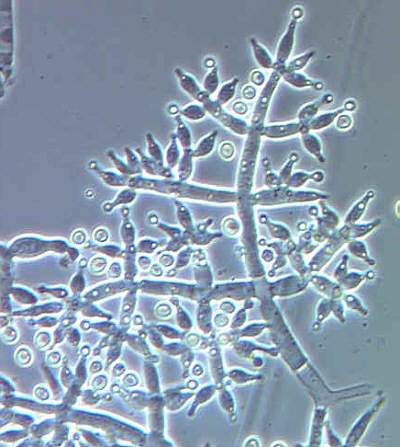- What Is Trichoderma?
- How To Use
- Issues with AM Fungi
- Systemic Acquired Resistance (SAR)
What Is Trichoderma?
Trichoderma is a fungus that can be naturally found in nearly all soils and are usually the most prevalent fungi in soil. The term trichoderma refers to a fungal genus that includes numerous species that have a role in agriculture. The fungi can increase the rate of plant growth and development by solubilizing certain nutrients. Trichoderma can also help with drought resistance and certain species can have fungicidal properties. The ability for trichoderma to survive in diverse environmental conditions and kill other fungi gives it a reputation for being an aggressive soil colonizer.

How To Use
There are many products available for purchase that contain trichoderma, but the most beneficial products will contain a mix of microbes including trichoderma. One of the most popular products that contain a mix of microbes is Plant Revolution Inc.’s Great White product which is a product that I personally recommend for horticulture. Applying a powder or liquid inoculant is as easy as watering or directly applying to the root ball during transplanting. Once trichoderma spores come into contact with roots they colonize the root surface or root cortex depending on the species. You will need to reapply the inoculant product periodically throughout the plant’s life cycle depending on which product you choose to use.
Issues with AM Fungi
The antagonistic fungus Trichoderma, specifically Trichoderma harzianum, are widely recognized for their soil-borne plant pathogen control potential. There is evidence to suggest that trichoderma suppresses arbuscular mycorrhiza (also known as endomycorrhizae or AM fungi) root colonization, but only when trichoderma inoculation occurs before AM fungi inoculation. This is why many horticulturalists worry that T. harzianum will have adverse effects on AM fungi, but studies have suggested that at least one species of AM fungi, Glomus intraradices, was unaffected in its ability to increase phosphorus uptake and it is suggested that AM fungi can adversely affect T. harzianum and T. Koningii if inoculation of AM fungi occurs prior to trichoderma inoculation. This is why it is important in this situation to get the timing of the inoculation of both microbes correct.
Systemic Acquired Resistance (SAR)
Systemic Acquired Resistance (SAR) has been briefly covered in some of my previous blog posts and I will briefly discuss it here as well. It describes a plant’s resistance response that occurs following an earlier exposure to a pathogen. SAR can also be described as the innate immune system found in plants. Trichoderma can produce several compounds that elicit plant defense responses which can contribute to any IPM program by reducing the use of pesticides.
Comments powered by Talkyard.